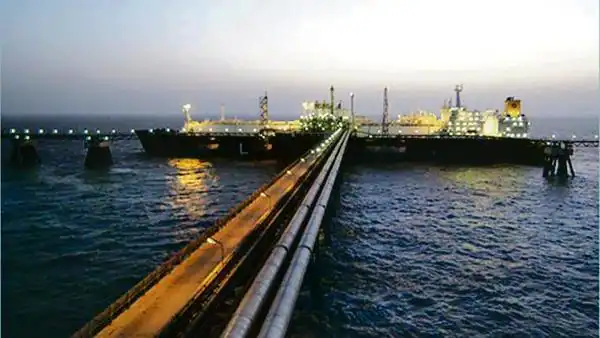With a population of more than 1.4 billion people, India is one of the largest energy markets in the world. This, by extension, means that India is among the top contributors to carbon and sulfur emissions. There is an urgent need to remove fossil fuels such as coal from the subcontinent’s energy mix. Liquefied natural gas (LNG) shows promise as the low-carbon energy source that will propel India to a carbon-free future. When used in maritime and land transport, for example, LNG generates about half as many greenhouse gases (GHG) emissions as coal.
LNG Companies Leading India’s Energy Transition
India is the fastest-growing economy in the world with its economy predicted to grow by a rate of 3.1% through 2024. This fact, coupled with the realities of environmental sustainability in the subcontinent, creates a prime market for LNG now and in the foreseeable future. That’s why a ton of LNG companies have already touched base in India and a lot more are seeking government approval to start their operations. Some of the notable companies that are driving the LNG revolution in India’s energy sector are:
i. TotalEnergies
India’s Adani and TotalEnergies, a multinational energy and petroleum company, have collaborated with India’s Adani to build the Dhamra LNG terminal. The import facility is located on India’s east coast. The terminal provides Eastern India with LNG regasification and gas pipeline infrastructure that will potentially change the outlook of the region’s energy sector. When fully functional, the terminal will have a capacity of 5 mtpa, which is expected to double to 10 million metric tons per annum (mmtpa) soon.
ii. Petronet LNG
Petronet LNG was the first energy company to set up a regasification terminal in South East Asia. The terminal is located in Dahej, Gujarat, and has 6 LNG storage tanks with a total capacity of 17.5 mtpa. Petronet is in the process of adding more storage tanks and other vaporization facilities to raise the terminal’s capacity to 22.5 mmtpa.
iii. Atlantic, Gulf & Pacific Company of Manila, Inc. (AG&P)
Singapore-headquartered AG&P has invested significantly in India’s energy sector over the last 5 years, notably in the construction of a strong downstream infrastructure. The company manages LNG distribution in 12 geographical areas within southeast India, where it has played a key role in helping Indian households transition from LPG cylinders to piped natural gas.
AG&P is set to pump about $2 billion of capital investments between 2022 and 2030, which includes the development of an LNG terminal at Karaikal. The terminal will have an initial capacity of 1 mmtpa which, according to the CEO, Joe Sigelman, will expand to 5 mmtpa by 2025. Karaikal LNG will serve a radius of 300 kilometers, both industrial and commercial customers.
Key Benefits of LNG Terminals in India
1. Increased adoption of natural gas
According to India’s oil ministry, India consumed more than 5 billion cubic meters (BCM) of natural gas in January 2023 alone. That’s a 6.4% jump from January 2022. LNG imports also rose by 7.9% to 2.27 BCM from a year ago. Because LNG produces lesser sulfur and carbon monoxide than oil fuel and coal, its increased consumption is a step closer to the net-zero emissions target.
2. Employment opportunities
On average, one LNG terminal employs between 200-800 permanent employees depending on the size of the terminal. This figure can rise to tens of thousands if you add contractual employees during construction. LNG terminals in India are creating jobs for locals and injecting millions of dollars into the local economy in terms of employee remuneration and taxes.
3. City gas distribution
By pumping billions of dollars into India’s City Gas Distribution (CGD) sector, LNG companies are aiding the country’s quest for a sustainable energy future. AG&P Pratham, for example, distributes LNG to 28 districts within the states of Andhra Pradesh, Rajasthan, Tamil Nadu, Karnataka, and Kerala. According to Joe Sigelman, the company serves 80 million people across 8% of India with efficient, clean, and low-cost fuel alternatives. 28 districts. AG&P is also on the process of building a network of 1,500 CNG stations to make it possible for India’s transport sector to transition to LNG.
4. Cleaner environment
When it burns, LNG generates 30% less carbon dioxide than fuel oil and 45% less than coal. Its nitrogen oxide emissions are half of what other fossil fuels produce. What’s more, LNG engines don’t emit any of the microscopic pollutants that gasoline engines. India now has better quality air thanks to LNG.
Conclusion
LNG is a transition fuel that will help India ditch dirty fuels and move on to clean, renewable energy. As more LNG terminals emerge and expand across the country, we can only predict a bright future in the country’s energy sector.







